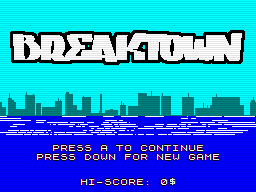Breaktown
Sandbox, © KesieV 2017

The evolution of the sandbox concept gives a stunningly accurate snapshot of the human controversy - and I'm not talking about just the sandbox game genre.
As usual let's start with the term itself: a sandbox is "a box or receptacle for holding sand, especially one large enough for children to play in". Toca Boca, a sweden game development studio, nicely lists a set of activities children can experience in sandboxes: exploring stuff, dig into imaginary play, getting stronger, add to their sensory vocabulary, practice social skills, collaborate and experiencing impermanence.
Joining meaning and purpose together, a sandbox is a controlled and enclosed environment in which a set of common rules applies mainly as-is (social interactions protocols, impermanence of the world etc.) and other rules are damped (increased range of exploration, role play is socially accepted) in order to gain new skills easier.
Now let's try to find some everyday sandboxes and understand how and why these works - and we're going to start with our beloved Grand Theft Auto for a very important reason: why this very influential game series even exists.
In 1995, the game studio DMA Design was working on an open world car racing game called Race'n'Chase in which the player had to do a number of missions in a city as a criminal or as a police officer. While it should be engaging on the paper, playtesters found the concept pretty dull and the development slowed down.
The legend says that, due to a bug, a build of the game had a very aggressive version of the police that chased the player recklessly instead of obviously following of the laws. And these wild runs were way more engaging than the main missions the game offered, becoming an official gameplay mechanic and trasforming Race'n'Chase in the GTA we all know.
While it's always fascinating seeing errors becoming features, what I've also found particular is the reason the playtesters found the glitched gameplay interesting. Why the game started being fun when the cops stopped following the rules? In my opinion, even when the player plays the role of a criminal, he realistically applies good sense, limiting damages and playing safe.
But the cops not following the rules clearly attests the fact that these rules are damped in that enclosed environment, transforming Race'n'Chase in a true child sandbox: role playing is now less limited, allowing the player to better dig into imaginary play and becoming a full-fledged criminal and, in order to play his new role well and keep experiencing this wild rampage he can't experience in real life, he is incentivized on getting better on running from the police. And, finally, in Grand Theft Auto V (2013), he can collaborate and experience impermanence online with friends.
Now just think about supporters screaming at a soccer match, cosplayers at comic and videogame events, paintball and boxe matches, discotheque and even all-you-can-eat restaurants. Making an enclosed and controlled environment in which some selected rules doesn't applies - often the same rules the society decided for itself - always makes humans happy: probably what makes singles different is just the set of rules we like to remove from time to time.
Funny, isn't it?
Plot!
There is just one thing you can't do in Breaktown, and that's making Frank, the local boss, angry. Sadly you managed to do that and, if you and your family want to stay alive, you've to find a lot of cash for him. The good news is that's a quite easy task in Breaktown: just keep answering to the public phones and follow the instructions. Good luck!
When walking use UP/DOWN/LEFT/RIGHT for moving, A BUTTON for firing with your weapon and the B BUTTON for punching and interacting with stores, cars and other objects. When driving use LEFT/RIGHT for steering, UP for accelerating, DOWN for braking, A BUTTON for firing with your gun and the B BUTTON for leaving the car.
(Want to share something? You can find me on Twitter!)
 Install / Add to home
Install / Add to home
 View game sources
...or play it online below!
View game sources
...or play it online below!